This is how Heijmans is making itself more sustainable
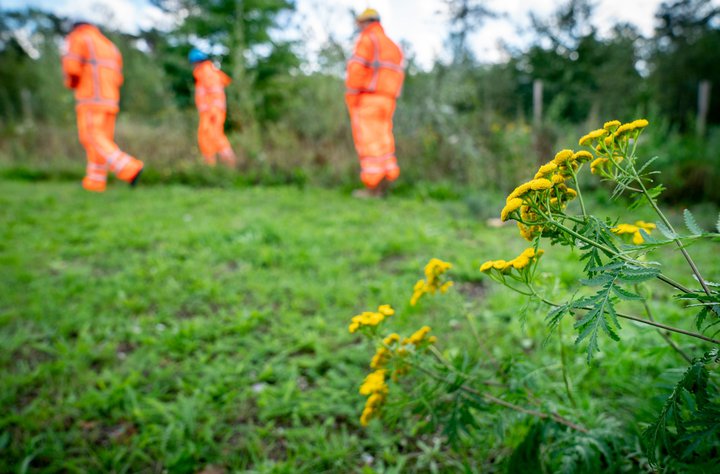
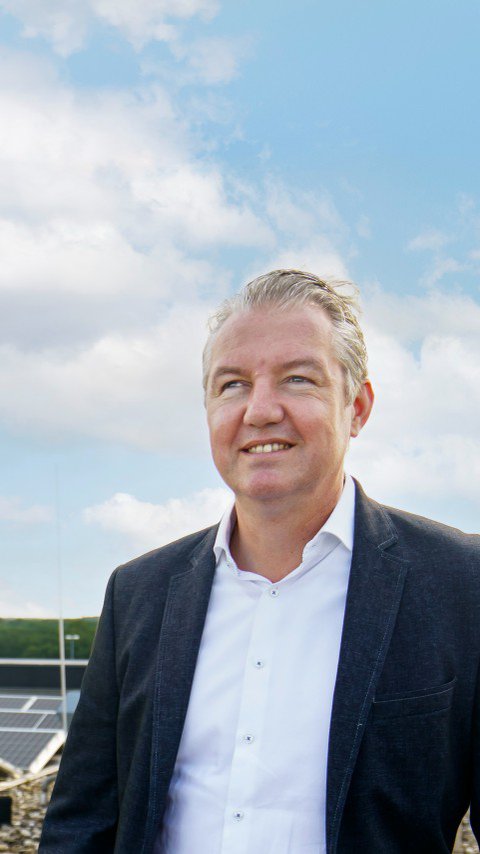
How do you make a construction company more sustainable? Together with an ever-growing group of colleagues Robert Koolen, Heijmans’ Sustainable Development Director, is reducing the CO2 emissions one careful step at a time. To achieve Heijmans’ ambition to be CO2 neutral in 2023, the company is taking action on a number fronts, including mobility, its offices, its building sites and its car fleet and equipment.
When the sun breaks through the clouds, it bathes the trees, houses, roads and the Heijmans yard in Rosmalen in a beautiful light. Robert Koolen enjoys the view, but he’s more impressed by the solar panels surrounding him. The solar panels on the roof of the Graafsebaan offices provide the energy to charge the growing number of electric cars in the company’s underground parking garage. And they’re one of the first concrete steps in Heijmans’ large-scale Energy Management Plan to drastically reduce the company’s CO2 emissions.
“First of all, because Heijmans wants to create a healthy living environment. This is why we are making our operations more sustainable on all kinds of fronts, including our energy consumption. We have made the bold statement that we want to be CO2 neutral in 2023. On top of this, more and more of our clients are asking us to make our work more sustainable and to build emissions free. This includes the likes of major infrastructural projects, but also Amsterdam, a city that wants cleaner air for its inhabitants. Not to mention the fact that sustainability-related regulations are getting stricter and stricter.
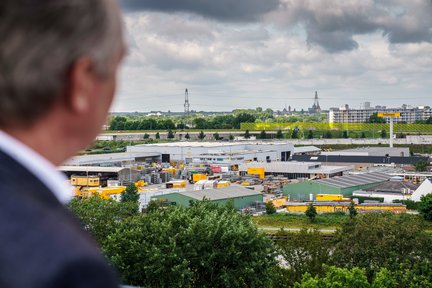
So, plenty of reasons to take a look at our CO2 emissions. We have these checked each year by independent experts, so that we can show these to our clients in the form of a CO2 performance ladder. We want to keep our license to operate and minimise our negative impact on climate change, which is why we want to reduce our CO2 emissions. The Energy Management Plan enables us to organise that centrally for the entire organisation, as well as to generate synergies and create a sense of urgency.”
“Are you ready for a lesson in CO2 bookkeeping? There are a number emissions categories, the so-called scopes. Scope 1 covers the emissions we generate through our own operations, for instance via our equipment. Scope 2 covers the energy we buy in to heat and light our offices. The boiler at our head office is natural gas-powered so it emits CO2. If our heating is electric, but is delivered from a coal-powered power station, that also falls into scope 2.
Scope 3 covers activities indirectly responsible for emissions, like the energy our suppliers use to produce and transport our building materials, and the use of our end-products, for instance by the residents of the houses we build. We define our ambition to be CO2 neutral as follows: we generate our own energy, we reduce our scope 1 and scope 2 CO2 emissions and we offset the rest.
Following an analysis of these categories, we identified four areas where we can make changes to help us achieve our ambition: our offices, our fleet of cars, the lay-out of our building sites and our equipment.”
“We have a working group active on each of these fronts. How successful they are will depend on what is technically possible and what is financially feasible. If we have long-term rental leases or own our offices, we install solar panels on the roofs and we opt for LED lighting. We’re also doing that with as many of our crew huts as we can.
As part of our efforts to make our car fleet, the lease cars that our colleagues drive, sustainable we are in talks with partners like Leaseplan and car makers: can they deliver the number of cars we need? In the meantime, we’re encouraging colleagues to use electric cars by offering them a mobility budget, scrapping their own contribution for electric cars and increasing the number of charging stations at our offices. After 2023, we’ll only provide electric lease cars, so we’ll no longer have any emissions on that front.
A bigger challenge will be making our equipment and building sites sustainable. For that we’ll have to make the entire construction chain more sustainable. For instance, the manufacturers of asphalt spreading machines only make a few of these machines each year, so they won’t switch to electric machines just for us. This is why we’re now active in the Emission-free Infra Network (Emissieloos Netwerk Infra), so we can work with other builders to convince building equipment makers to go electric.
On another front, making asphalt plants sustainable will require huge levels of investment and that’s also a lot easier if you work with others. That was one of the reasons we joined forces with BAM to set up Asfalt.nu. Buying sustainable asphalt from them gives them an incentive to produce asphalt more and more sustainably.
Apart of these challenges, there are whole host of practical problems we need to solve: is our office accommodation policy still sustainable enough? Do we need to move to sustainable buildings close to public transport hubs? Can you charge your electric lease car at the building site you’re working at? Or at home? How do we charge heavy equipment on site as sustainably as possible? For instance, excavators require enormous amounts of energy, certainly a lot more than we can generate from solar panels on our crew huts. We’ll probably need batteries or generators run on bio-diesel. We’re currently studying all of these issues and we’re hoping to use our first electric or hydrogen-powered machines in 2022.”
“We’re applying an enormous amount of pressure on all these fronts, but I’m really not sure we can go any faster. There are all kinds of reasons for that: equipment we bought five years ago that will last another 20 years, we don’t always own our offices and we depend on suppliers.
This is why we are investing in carbon capture projects. That’s called offsetting: in exchange for the CO2 we emit, we help to reduce emissions elsewhere. We want to do this with reliable partners, which is why we are now buying Dutch wind certificates. Basically, we’re investing in sustainable energy generation. But we’re also looking at other possibilities, such as financing forest protection initiatives elsewhere in the world via credits. If you choose the right credits, you can sometimes achieve a lot more than just offsetting: you can protect the inhabitants of tropical rainforests or boost fair trade in timber.
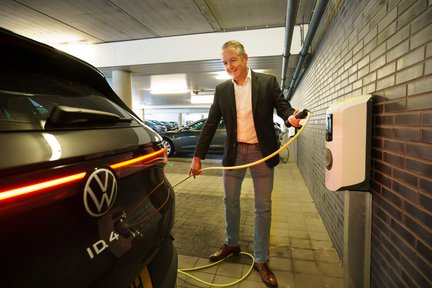
These investments are still sometimes referred to as buying off emissions, but I don’t agree with that. CO2 offsetting costs Heijmans money and that is a powerful financial incentive to continue making our activities more sustainable. That’s how you keep the pressure up. I do think we could be more open about the projects we invest in indirectly and what we achieve through those projects. For instance, how long will a forest we help finance be around? We need to do this to get rid of the negative associations of CO2 offsetting.”
It’s great that the bar keeps getting higher. We want to jump.
“Time! It will take us at least eight years to get to zero scope 1 and 2 emissions without offsetting. We’re also switching our focus to scope 3: looking at the entire chain. Asking our suppliers the hard questions: if we buy this equipment from you how will it impact our CO2 performance? As a buyer, we can exert more and more influence, taking the construction chain in the direction of CO2 reduction. And as I’ve already said, our fleet manager has some hard targets to meet.
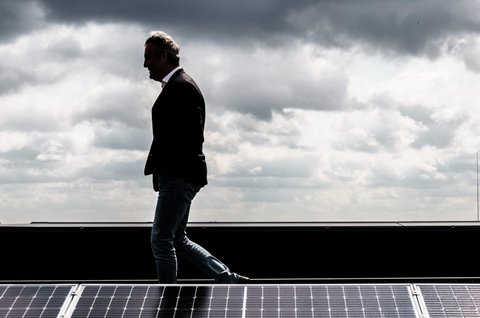
It might surprise my colleagues, but I’d like to call for much stricter sustainability regulations. Because that will give us a level playing field. I welcome every single law that enforces sustainable production because it keeps players that can’t meet requirements out of the market. Thanks to our scale and our expertise, we can respond effectively to this transition. Set the bar higher, and we will jump higher!
And don’t forget our clients. Public sector clients should certainly be making sustainability a decisive factor in their tenders. Sadly, Dutch construction industry body Bouwend Nederland recently calculated that sustainability played a role in just 30 percent of tenders, and was a decisive factor in just 10 percent. We want to be challenged by our clients. The more they demand, the more we can innovate.
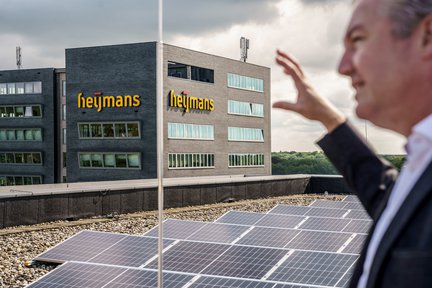
And of course I won’t be able to do this without everyone at Heijmans, and in the entire construction sector. In the 15 years I’ve been working at Heijmans, I’ve seen sustainability permeate every single part of the company. In the past, sustainability expertise was confined to a few specialists, but now everybody knows something about it, from developers to site managers. Sustainability has become front of mind at Heijmans. It’s not just something for me, but for everyone. Outside the company, I’m trying to team up with other construction companies and developers, so we can forge a strong movement that stimulates our clients to make their tenders more and more sustainable.”